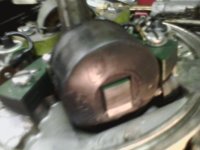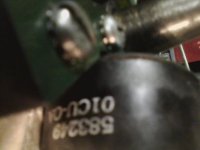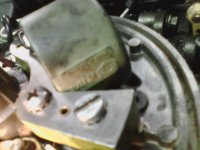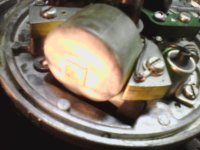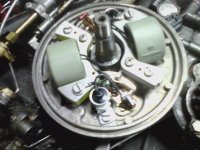CarMech1969
Regular Contributor
Hello fellow mariners,
My Sportwin 9.5 (Model# 9422R) doesn't seem to reach maximum RPM. It revs great in Neutral, but when in gear and under load on the lake, it seems like it should have much more. I have heard clips of the same motor under way on YouTube, and the RPM sounds much higher.
I've attempted to clean the carb with a can of carb cleaner, cleaned out the fuel filter screen in the glass bowl. No appreciable change.
It's running on both cylinders, but it seems like one cylinder is getting more fuel than the other, as one plug appears 'washed', like as if too much fuel is dumping in there. The other plug has a typical light grey colour on the firing end.
The motor starts very easily (one pull) and runs great at lower throttle openings.
I'm thinking that I have carb problems, but any feedback from experienced marine mechanics would be greatly appreciated.
I am an auto mechanic by trade, but have very little experience with small motors, so I'd like to be educated before I start tearing into anything.
Thanks for reading, and have a great day!!
Regards,
Steven A
My Sportwin 9.5 (Model# 9422R) doesn't seem to reach maximum RPM. It revs great in Neutral, but when in gear and under load on the lake, it seems like it should have much more. I have heard clips of the same motor under way on YouTube, and the RPM sounds much higher.
I've attempted to clean the carb with a can of carb cleaner, cleaned out the fuel filter screen in the glass bowl. No appreciable change.
It's running on both cylinders, but it seems like one cylinder is getting more fuel than the other, as one plug appears 'washed', like as if too much fuel is dumping in there. The other plug has a typical light grey colour on the firing end.
The motor starts very easily (one pull) and runs great at lower throttle openings.
I'm thinking that I have carb problems, but any feedback from experienced marine mechanics would be greatly appreciated.
I am an auto mechanic by trade, but have very little experience with small motors, so I'd like to be educated before I start tearing into anything.
Thanks for reading, and have a great day!!
Regards,
Steven A


